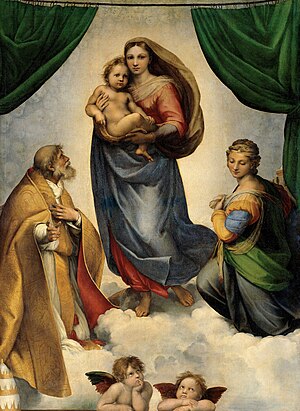Mary, mother of Jesus

Mary (Hebrew: מרים Mirjam; Aramaicܡܪܝܡ; Arabic مريم Maryam, Mariam, Meryem or Marjam; Greek: Μαριάμ Mariam), also called Madonna (Italian: "my lady") in artistic representation, is, according to the tradition of the New Testament and the w:Quran, the mother of Jesus of Nazareth, more precisely of the Nathanian Jesus. After her heavenly transfiguration, she is venerated as the Queen of Heaven (Latin: regina caeli or regina coeli) and is depicted in the Apocalypse of John in the image of the "woman clothed with the sun, and the moon under her feet, and upon her head a crown of twelve stars" (Rev 12:1ESV).
The Virgin Sophia
In esoteric Christianity, the mother of Jesus was always called the "Virgin Sophia", as also by John the Evangelist; only exoterically does he call her the "Mother of Jesus". In Christian esotericism, this refers to the astral body purified of lower sensual desires (→ catharsis) and elevated to the spiritual self. The fact that Mary's virginity must not be misunderstood as an external miracle in the bodily sense is also emphasised by the apocryphal Gospel of Philip, which belongs to the Valentinian gnosis:
„Some said, "Mary became pregnant by the Holy Spirit." They are in error. They do not know what they are saying. When has a woman ever become pregnant by a woman? Mary is the virgin whom no power stained. She is a great sanctuary for the Hebrews, that is the apostles and the disciples of the apostles. This virgin who stained no power, the powers stained themselves. And the Lord would not have said, "My Father who is in heaven," if He had not had another Father, but He would simply have said, "My Father!"“
